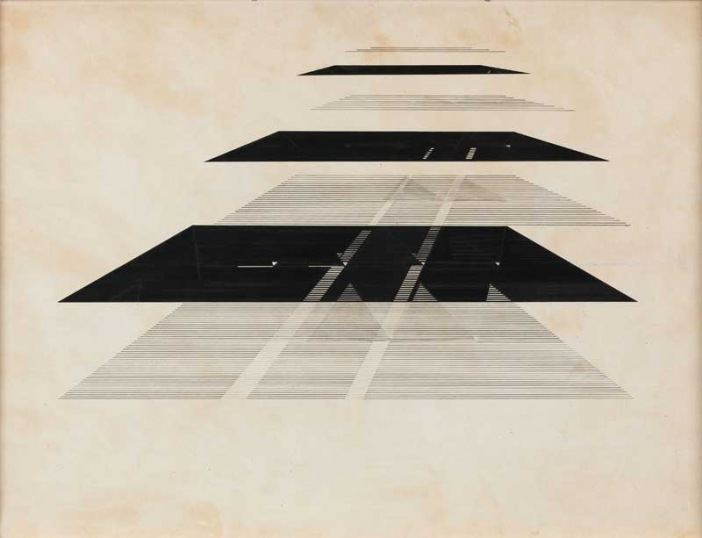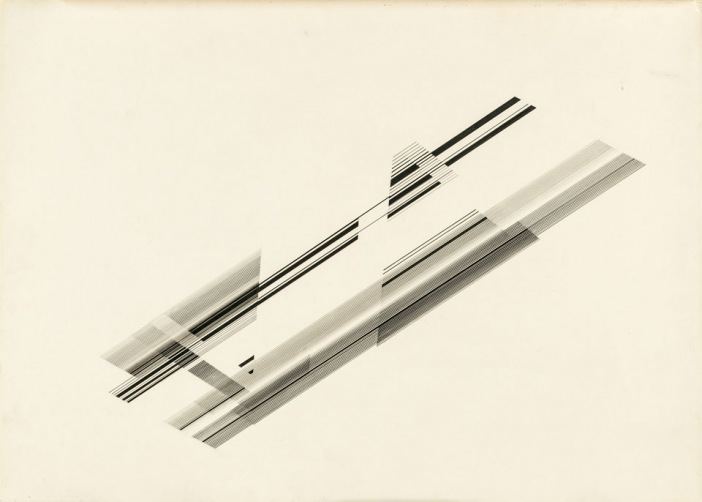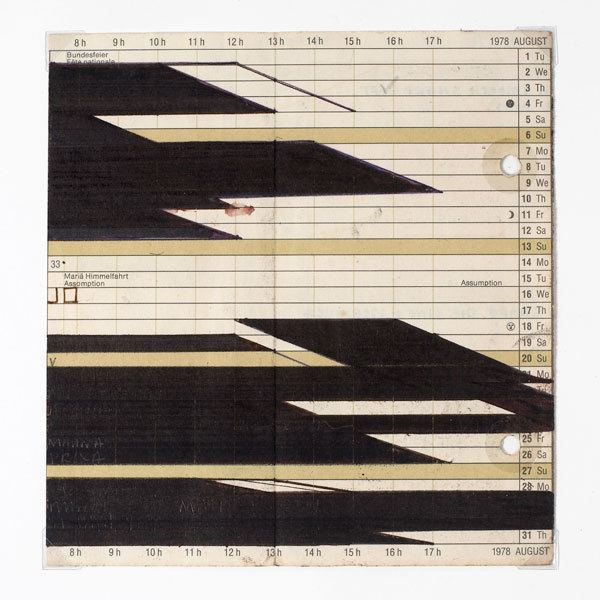Name Nasreen Mohamedi Role Artist | Died 1990, Vadodara | |
 | ||
Nasreen mohamedi la espera forma parte de una vida intensa
Nasreen Mohamedi (1937—1990) was an Indian artist best known for her line-based drawings, and is today considered one of the most essential modern artists from India. Despite being relatively unknown outside of her native India during her lifetime, Mohamedi's work has been the subject of remarkable revitalisation in international critical circles and has received popular acclaim over the last decade. Her work has been exhibited at the Museum of Modern Art (MoMA) in New York, the Kiran Nadar Museum of Art in New Delhi, documenta in Kassel, Germany, and at Talwar Gallery, which organised the first solo exhibition of her work outside of India in 2003, and which has represented her estate for over a decade, in New York and in New Delhi. Today, Mohamedi is considered one of the major figures of the art of the twentieth century.
Contents
- Nasreen mohamedi la espera forma parte de una vida intensa
- Remembering nasreen mohamedi the artist video
- Life and career
- Influences
- Work
- Photowork
- Solo exhibitions
- Publications
- References

Remembering nasreen mohamedi the artist video
Life and career

Born in 1937 in Karachi, India, in what became western Pakistan some ten years after her birth, Mohamedi lived, even from her early years, a cosmopolitan life. Her family moved to Mumbai in 1944, and later Mohamedi attended St. Martin's School of the Arts, in London, from 1954 to 1957. After living briefly with her family in Bahrain, Mohamedi studied on a scholarship in Paris from 1961 to 1963, and when she returned to India, she joined the Bhulabhai Institute for the Arts in Mumbai, where she met other artists working at the time, including V.S. Gaitonde, M.F. Husain and Tyeb Mehta. She settled in Baroda in 1972, where she taught Fine Art at Majaraja Sayajirao University, and would continue teaching until her death in 1990. She also travelled abroad extensively, spending time in Kuwait, Bahrain, Japan, United States, Turkey, and Iran over the course of her life. Travel provided an essential source of inspiration for Mohamedi, who photographed and kept diaries throughout her life; not only was she influenced by the deserts, Islamic architecture, and Zen aesthetics that she was exposed to during her travels, but, as Susette Min notes, “Mohamedi was deeply and intensely aware, as indicated in her photographs and journal entries, of herself and her body moving in time.” During the last decade of her life, Mohamedi’s motor functions gradually deteriorated as she was challenged with a rare neurological disorder similar to Parkinson's disease; she was able, however, to retain control of her drawing hand, and to continue to create the precise, meticulous work she became known for, until her death at age 53.
Influences

Mohamedi is most often associated with Agnes Martin, with whom she was paired at the 2007 documenta in Kassel, Germany. Although Mohamedi's disciplined mark-making and frequent use of grids and lines does recall Martin's work, however, Mohamedi herself was not aware of the American artist and her paintings until late in her life.
It is known that Mohamedi knew and communicated with many of the leading artists in India in the 1960s and 1970s; V.S. Gaitonde, the great Indian abstract artist of the 20th century, as well as Tyeb Mehta, a renowned painter and part of the noted Bombay Progressive Artists' Group, became her mentors in the 1960s. Despite her interaction with such figures, as well as her immediate proximity to artists like M.F. Husain, Bhupen Khakhar, Ghulam Mohammed Sheikh, and Arpita Singh, Mohamedi created her own distinctive style; working at a time when the tendency was toward figurative or representational work, Mohamedi persisted in her pursuit of a personal vocabulary through which she saw the world.

In her diaries, Mohamedi makes reference to Kasimir Malevich and Wassily Kandinsky, both of whom she admired and claimed as influences on her work. Indeed, Constructivism and Suprematism are often used in approaching her work, which seems to share not only a geometric language, but also follows a similar urge to distill a systematic formal order from nature. The lyricism of Mohamedi’s work, the counterpoint to its precision and meticulousness, seems to have been influenced by the poetic and spiritual aspects of Paul Klee and Wassily Kandinsky; in 1970, at what Kapur names as a critical point in her career, Mohamedi wrote in her diary, "Again I am reassured by Kandinsky – the need to take from an outer environment and bring it an inner necessity."
Comparisons to Mohamedi's contemporaries are also frequent among reviews of her work; she is often associated with the American minimalism of the 1960s and 1970s and likened to artists such as Carl Andre, Ad Reinhardt, Barnett Newman, Mark Rothko, Richard Tuttle, and John Cage. Although not as closely related to her work formally, Eva Hesse has also provided an illuminating comparative example to Mohamedi, especially in the charisma and sensitivity she exhibited as a teacher and mentor.
Mohamedi's extensive travel also had great influence on the direction of her work. Not only was she able to gain exposure to Western artists and movements through her visits and study in Europe and in the United States, but she also became fascinated by Eastern traditions in her extensive travel in Asia. The distinctly emotive aspect of her work has been cited as the influence of the lyricism of Sufi, while her combination of geometry and arabesque line is often traced to an exposure to Islamic design, especially the architecture of Iran, Turkey, and Rajasthan. Mohamedi’s work also evidences the influence of Zen Buddhism, which she embraced spiritually, particularly its rhythmic counterpoint of positive and negative spaces.The time she spent in the desert regions of Bahrain and Kuwait have been cited as sources of some of the spare geometry of Mohamedi's work. It is also known that Mohamedi was interested in weaving – a number of her photographs feature looms and textile machinery – an interest that appears in the patterned texture and intersecting lines of her gridded work.
Work
Mohamedi's work defies categorisation; the result of a disciplined and sustained effort to craft an individual formal vocabulary, it remains without parallel, the product and artefact of Mohamedi's distinctive personality, process, and aesthetic values. Although it is often difficult to temporally locate her work – she often left pieces untitled and undated – many critics have segmented her oeuvre into three general periods: an early period of sketches and semi-representational collage in the 1950s to mid-1960s, a “classic” period of increasingly non-representational forms, including her signature grid-based drawings, and a mature style in pen and ink. Although her work, especially the mature drawings of the 1970s and 1980s, is disciplined, even austere, it remains highly rhythmic – releasing the energy and movement of natural phenomena through line. The grid that so often provides a spatial environment for her drawings is less a limitation than a framework for her compositions, allowing, in the words of Deepak Talwar, the “poetry within structure” to emerge.
Photowork
Beginning in the 1950s and early 1960s, Mohamedi began photographing her surrounding environment – not only during her frequent travels, but in the course of her daily life. Her photographs were more than documentary, however; the photos from the 1980s, for example, like her late work in pen and ink, are abstracted to the point of becoming non-representational. Her friend and art historian Geeta Kapur has placed Mohamedi's photographs between the artistic and the real, stating that they create "an allegory of (dis)placement between the subject and the object." Although her photographs were never exhibited during her lifetime, they were subject to an artistic process as rigorous as the one Mohamedi used in executing her drawings. The photographs, although neither preparations for her drawings nor works incomplete in themselves, help to illuminate the principles that inform all of Mohamedi's work; as Gregory Galligan notes, "Mohamedi's is…a roaming, cursive, meandering consciousness, which lights effortlessly upon fragments in a landscape, the cityscape and Islamic architectural forms, such as the stepped cornice of an early mosque observed in extreme close-up…Spare, nearly weightless and almost entirely self-effacing, Mohamedi's aesthetic is ultimately about focusing consciousness back onto itself with the aid of an abstract foil." The first exhibition of Mohamedi’s photowork outside of India was in 2003, at Talwar Gallery in New York, and since then they have been exhibited internationally, both independently and alongside her other work.
